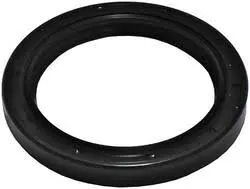9 月 . 06, 2024 13:12 Back to list
High-Quality Cylinder Gaskets for Reliable Engine Performance
Understanding Cylinder Gaskets Essential Components in Engine Performance
A cylinder gasket is a crucial component in an internal combustion engine, serving the vital function of sealing the space between the engine block and the cylinder head. This ensures that the combustion process occurs efficiently by preventing the escape of combustion gases, oil, or coolant from the engine. Made from materials like metal, composite, or rubber, cylinder gaskets must withstand high temperatures and pressures while maintaining a durable seal.
The main function of a cylinder gasket is to prevent leakage, which can lead to a host of engineering problems. For instance, if gaskets fail, it can cause a ‘blown’ gasket. This failure can lead to engine overheating, loss of power, and increase the risk of catastrophic engine damage. Symptoms of a failing cylinder gasket often include coolant leaks, unusual engine noises, and the presence of white smoke from the exhaust system due to coolant entering the combustion chamber.
When it comes to choosing the right cylinder gasket, it's important to consider the specific requirements of the engine in question. Different engines have unique designs and configurations which require gaskets tailored to their specific needs. For example, high-performance engines might require multi-layer steel (MLS) gaskets that offer superior sealing properties under extreme conditions. Meanwhile, standard engines may benefit from softer composite gaskets that can accommodate minor imperfections in the mating surfaces.
cylinder gasket

Installation is another critical aspect of cylinder gaskets. It’s essential to follow the manufacturer's specifications on torque settings and installation procedures to ensure an effective seal. Improper installation can lead to uneven pressure distribution, which increases the likelihood of premature failure. Additionally, ensuring that both the engine block and cylinder head surfaces are clean and free from old gasket material is crucial for the longevity of the new gasket.
Regular maintenance can also play a significant role in extending the life of a cylinder gasket. Monitoring engine temperatures, ensuring proper coolant levels, and conducting routine inspections can help detect early signs of wear or damage. Addressing these issues promptly can save both time and money, preventing more extensive repairs down the line.
In summary, the cylinder gasket is an indispensable element of engine design that plays a pivotal role in performance and durability. Understanding their function, selecting the right material, and ensuring proper installation are key factors for any vehicle owner or mechanic. By prioritizing these aspects, drivers can maintain efficient engine performance and enjoy a longer lifespan for their vehicles.